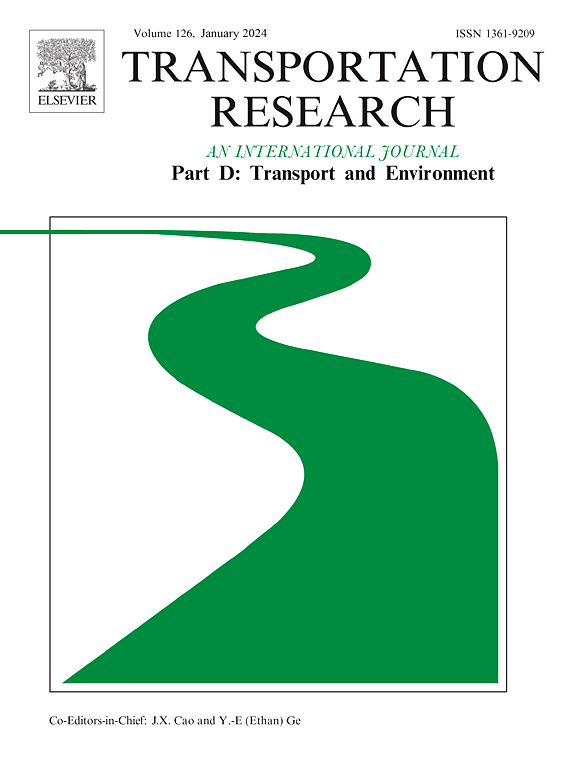How to improve PHEV electric mileage ratios? Factor decomposition with Explainable AI
IF 7.7
1区 工程技术
Q1 ENVIRONMENTAL STUDIES
Transportation Research Part D-transport and Environment
Pub Date : 2025-07-12
DOI:10.1016/j.trd.2025.104876
引用次数: 0
Abstract
Plug-in hybrid electric vehicles (PHEVs) are yet another practical solution for reducing emissions, although the effect depends on the electric mileage ratio (EMR). This study explored the relationship between EMRs and charging habits, traffic conditions, driver disposition, socioeconomic attributes, and area characteristics using an Explainable Boosting Machine (EBM). Utilizing an extensive dataset from Japan, the fifth-largest emitter worldwide, the EBM offers higher prediction accuracy and clearer interpretations than traditional methods. This approach allowed us to conduct a comprehensive analysis, thereby filling an important gap in the literature. Charging habits and driver disposition had a greater impact on the EMR compared with other factors. Encouraging home charging could be more effective in improving the EMR than developing public charging stations by promoting policies based on the learned EBM. Our results provide useful information for developing policies to improve the on-road emission reduction benefits of PHEVs.
如何提高插电式混合动力电动行驶里程比?可解释AI的因子分解
插电式混合动力汽车(phev)是另一种减少二氧化碳排放的实用解决方案,尽管效果取决于电动里程比(EMR)。本研究利用可解释提升机(EBM)分析了电子病历与充电习惯、交通状况、驾驶员性格、社会经济属性和区域特征之间的关系。利用来自全球第五大二氧化碳排放国日本的广泛数据集,EBM提供了比传统方法更高的预测精度和更清晰的解释。这种方法使我们能够进行全面的分析,从而填补了文献中的一个重要空白。与其他因素相比,充电习惯和驾驶员性格对EMR的影响更大。鼓励家庭充电比发展公共充电站更能有效地改善电子病历。我们的研究结果为制定政策以提高插电式混合动力汽车的道路二氧化碳减排效益提供了有用的信息。
本文章由计算机程序翻译,如有差异,请以英文原文为准。
求助全文
约1分钟内获得全文
求助全文
来源期刊
CiteScore
14.40
自引率
9.20%
发文量
314
审稿时长
39 days
期刊介绍:
Transportation Research Part D: Transport and Environment focuses on original research exploring the environmental impacts of transportation, policy responses to these impacts, and their implications for transportation system design, planning, and management. The journal comprehensively covers the interaction between transportation and the environment, ranging from local effects on specific geographical areas to global implications such as natural resource depletion and atmospheric pollution.
We welcome research papers across all transportation modes, including maritime, air, and land transportation, assessing their environmental impacts broadly. Papers addressing both mobile aspects and transportation infrastructure are considered. The journal prioritizes empirical findings and policy responses of regulatory, planning, technical, or fiscal nature. Articles are policy-driven, accessible, and applicable to readers from diverse disciplines, emphasizing relevance and practicality. We encourage interdisciplinary submissions and welcome contributions from economically developing and advanced countries alike, reflecting our international orientation.

 求助内容:
求助内容: 应助结果提醒方式:
应助结果提醒方式:


